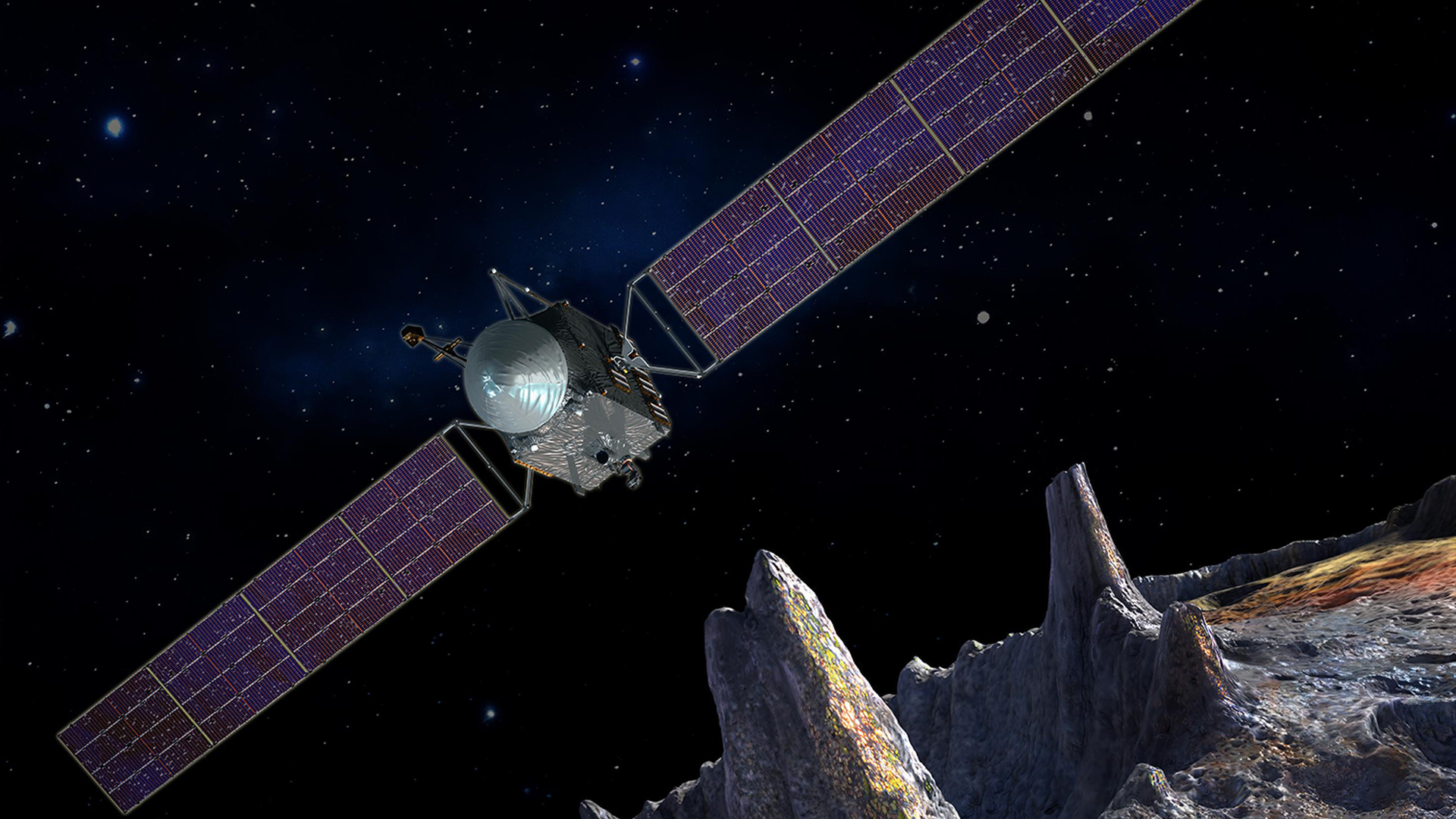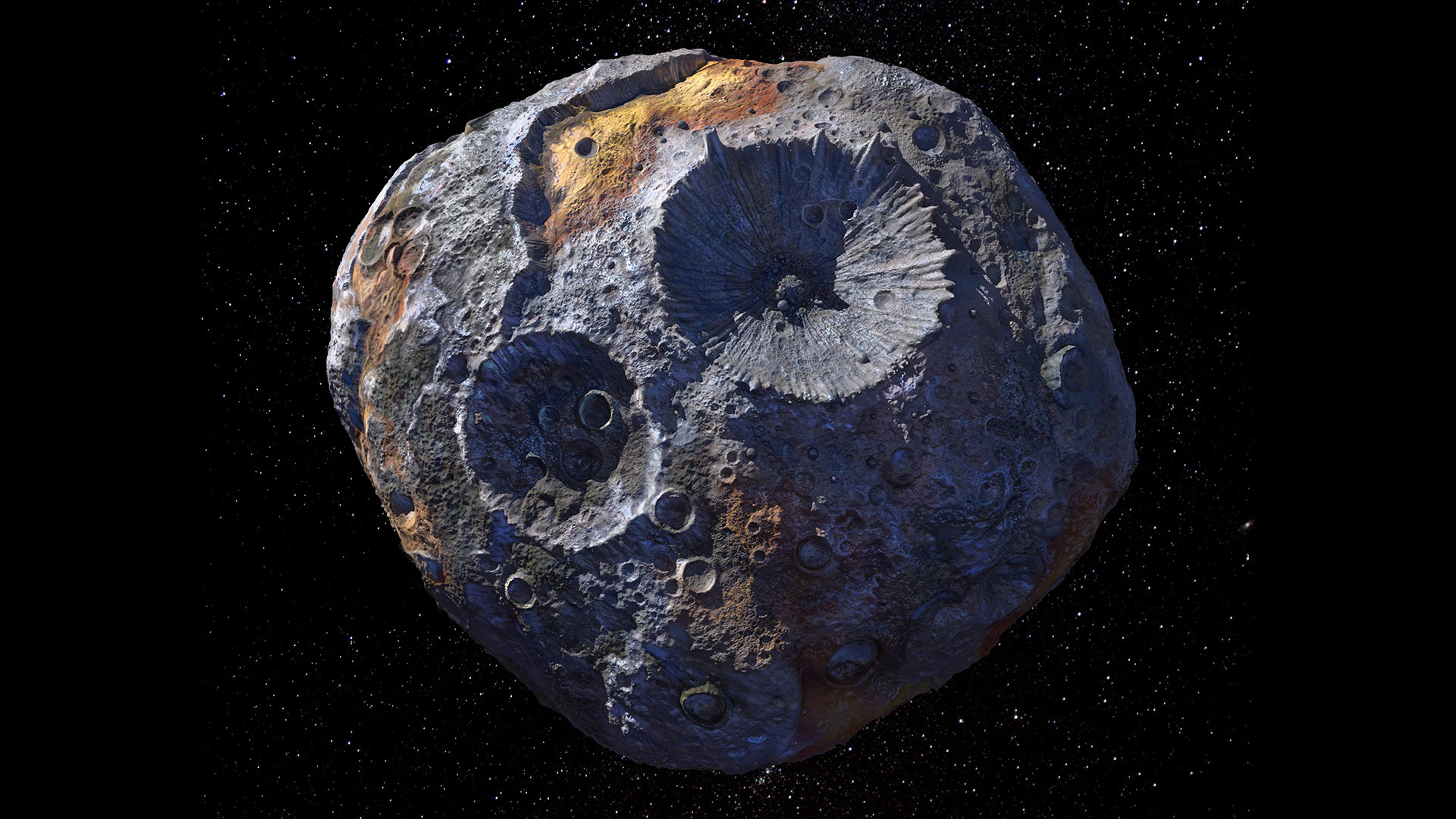Psyche: Everything you need to know about NASA's mission to a huge metallic asteroid
Launched on Oct. 13, 2023, the NASA mission to visit the metal-rich asteroid 16 Psyche aims to find crucial clues about the formation of our solar system's planets.

On Friday (Oct. 13) NASA's Psyche spacecraft blasted off from Kennedy Space Center in Florida atop a SpaceX Falcon Heavy rocket.
In 2029, after traveling 2.2 billion miles (3.5 billion kilometers), the spacecraft will arrive at the far side of the asteroid belt between Mars and Jupiter, where the asteroid 16 Psyche awaits.
Lurking within the metal-rich asteroid's partially exposed core are secrets of how the solar system’s rocky planets, including Earth, first came to exist. Here's everything you need to know about the Psyche mission.
What is asteroid 16 Psyche?
First spotted in 1852 by Italian astronomer Annibale de Gasparis, 16 Psyche is a metal-rich asteroid located in the asteroid belt at a maximum distance of 370 million miles (600 million km) from Earth.
At roughly 173 miles (279 km) across at its widest point, the potato-shaped 16 Psyche is one of the largest known asteroids in the solar system.
Scientists are interested in 16 Psyche because it shows signs of being a failed planet. Made up of an exposed iron core and outer layers of metal, the asteroid might have once become the core of a planet as large as Mars, but violent collisions with other large bodies during the solar system's formation prevented it from doing so.
Other planetesimals, or small bodies that form the cores of planets, are expected to contain many iron oxides, but these are missing from 16 Psyche's core. This leads astronomers to think that the mysterious asteroid could hint at a different kind of planetary formation mechanism than the one that created Earth.
Sign up for the Live Science daily newsletter now
Get the world’s most fascinating discoveries delivered straight to your inbox.

The spacecraft
Psyche is a roughly van-sized spacecraft consisting of solar arrays, a magnetometer, a gamma-ray and neutron spectrometer, and a multispectral imager to study the asteroid. It will propel itself through space by solar electrical propulsion, which uses converted sunlight to accelerate charged xenon atoms and blast them from one of its four thrusters.
Each of the four thrusters operates one at a time and provides a force equivalent to what a human would feel holding three quarters in the palm of their hand, according to NASA.
During its journey to the asteroid, the spacecraft will also maintain contact with Earth with a state-of-the-art Deep Space Optical Communications experiment, which will use a laser to send high-bandwidth communications back to Earth.
The long journey ahead
To arrive at the asteroid, the Psyche spacecraft will travel to Mars, using the gentle propulsion provided by the craft's ion thrusters, before slingshotting around the Red Planet. This gravity assist should enable the spacecraft to reach the asteroid by August 2029.
Once it has closed in on the asteroid, the spacecraft will begin making wide orbits, first scanning for a planet-like magnetic field with its magnetometer and then using its multispectral imager to scan the bumps and crevices of the asteroid's surface.
Drawing closer and closer in ever-tighter orbits of the asteroid, the spacecraft will then begin using its laser to figure out the mass and density of Psyche, as well as deploy its gamma-ray and neutron spectrometer to determine the asteroid's shape and the elements present on its surface.

Ben Turner is a U.K. based staff writer at Live Science. He covers physics and astronomy, among other topics like tech and climate change. He graduated from University College London with a degree in particle physics before training as a journalist. When he's not writing, Ben enjoys reading literature, playing the guitar and embarrassing himself with chess.










